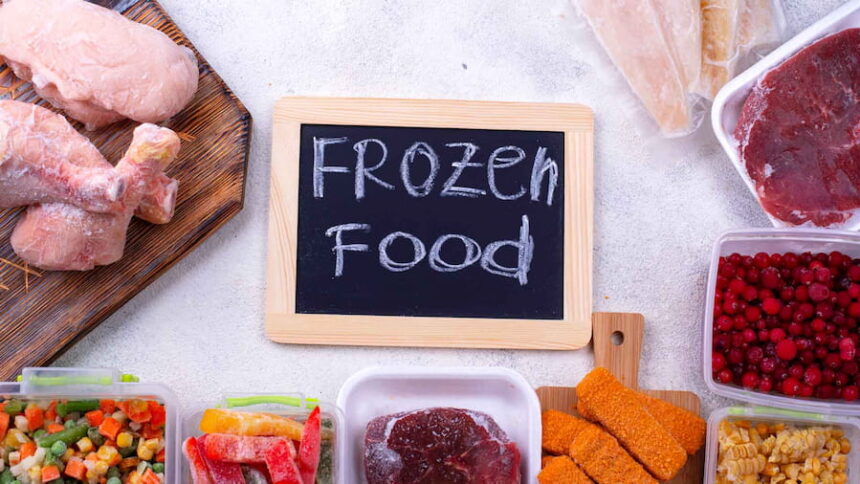Frozen food processing is a critical industry that demands precision, speed, and adherence to strict quality standards. Efficient operations not only translate to lower operating costs but also result in enhanced yield, increased throughput, and greater control over management systems. Within this context, the realm of frozen food processing emerges as a pivotal sector, characterised by the need for meticulous attention to detail, swift execution, and unwavering adherence to rigorous quality standards.
To thrive in this competitive arena and meet the ever-evolving demands of consumers, frozen food manufacturers must embrace a culture of continuous improvement. Here, the expertise of entities like ice cream machine service becomes invaluable, offering specialised support to optimise efficiency and drive operational excellence. In this article, we’ll explore seven actionable tips to enhance efficiency in frozen food processing.
Identifying Efficiency Gaps:
It’s crucial to pinpoint areas within the production chain where losses occur. From the initial grinding process to the final stages of transportation and logistics, every step presents an opportunity to streamline operations and reduce wastage. By conducting a comprehensive analysis of loss points, manufacturers can uncover hidden inefficiencies and implement targeted solutions to enhance productivity and profitability. Whether it’s optimising equipment utilisation or refining logistical processes, a meticulous examination of the entire production workflow is essential for unlocking potential efficiency gains.
Recipe and Formula Management:
Achieving consistency in product quality begins with precise control over recipe and formula parameters. Utilising advanced volumetric measuring techniques and metering tools enables manufacturers to ensure accurate ingredient proportions, minimising variations and enhancing product uniformity. Furthermore, adopting “right-sized” recipes tailored to match ingredient container capacities not only promotes cost containment but also facilitates smoother production processes. By prioritising formula consistency, manufacturers can uphold product integrity while simultaneously driving operational efficiency and cost-effectiveness.
Investing in Automation Technology:
By embracing automation, frozen food processors can significantly enhance efficiency. They should invest in advanced machinery and robotics to automate repetitive tasks like packaging, labelling, and palletizing. This investment accelerates production, improves accuracy, and reduces labour costs while boosting throughput.
Enhancing Cold Chain Logistics for Frozen Food:
To maintain the integrity of the cold chain, frozen food processors should invest in state-of-the-art refrigeration systems and temperature monitoring-equipped vehicles. Implementing robust quality control measures ensures that frozen products remain within the desired temperature range throughout the supply chain, from production facilities to retail outlets.
Have quality control practices:
Maintaining stringent quality control practices is imperative to ensure product safety and integrity. Just like any other food type, frozen products are susceptible to contamination. Effective production inspection processes are essential to meet industry standards and maximise quality. Quality control procedures typically revolve around inspection systems tailored to the specific product and potential contamination risks. For frozen products, commonly utilised inspection methods include metal detection and X-ray scanning. By implementing robust quality control measures, manufacturers can preemptively identify and address faults, ensuring that only products meeting the highest standards reach consumers. This not only safeguards consumer trust but also minimises the risk of costly recalls and reputation damage.
Checking Machinery Capacity:
In the fast-paced world of frozen food manufacturing, machinery capacity plays a pivotal role in meeting production demands. Manufacturers often deal with high loads, necessitating machines with increased capacities. It’s crucial to thoroughly assess the maximum load capacity of each machine, as disclosed by the provider. For equipment like multihead weighers, evaluating the number of available buckets is also essential, as it directly impacts processing efficiency.
However, while prioritizing high load-handling capabilities, it’s equally vital to uphold product integrity and quality standards. Ensuring that purchased machines maintain accuracy and do not compromise product integrity is paramount. By striking the right balance between capacity and quality, manufacturers can optimise production output while consistently delivering products that meet or exceed industry standards.
Conclusion:
In frozen food processing, efficiency is the key to success. By implementing these tips, manufacturers can optimise their operations, increase productivity, and stay ahead of the competition. From streamlining workflow processes to embracing automation and sustainability, every improvement contributes to a more efficient and profitable operation. By continuously monitoring performance and adapting to evolving challenges, frozen food processors can ensure long-term success in this dynamic industry. Visit Linuxia for more informative blogs.
